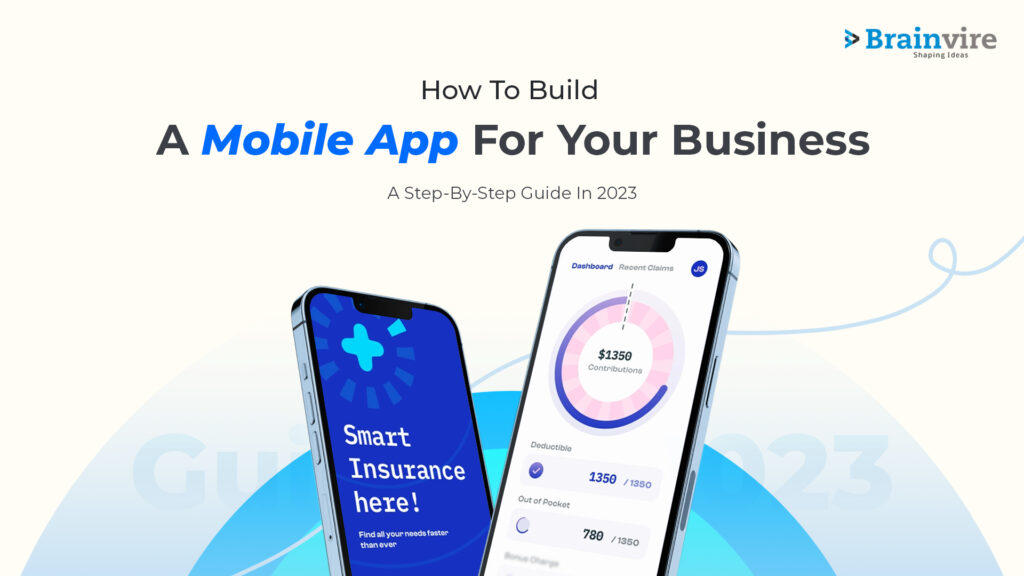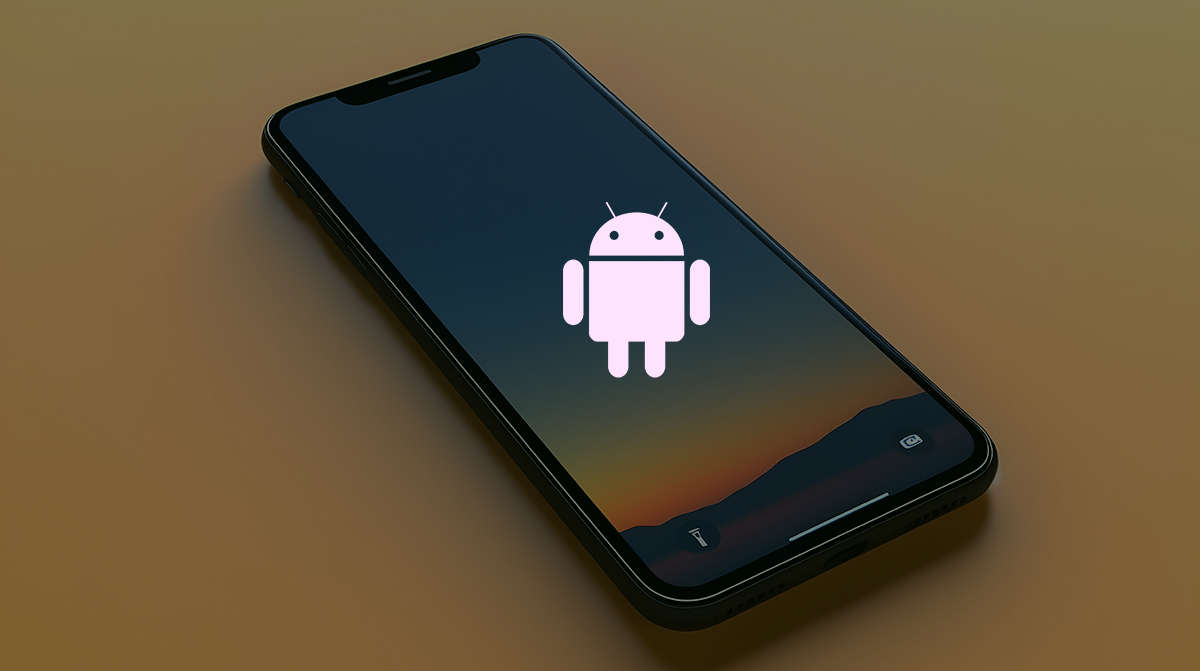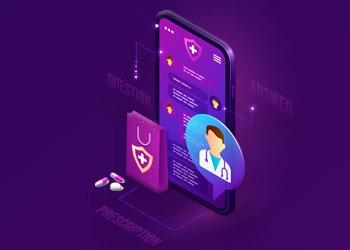With over 11.14 billion (and counting) smartphone users across the globe, having a mobile app for your business in 2023 could be your chance to amplify the success of your operations. A mobile application allows you to tap into a wider audience and build goodwill and brand loyalty.
Mobile Application Development: The Problem At Hand
With tech giants like Imangi Studios, Pinterest, and TikTok, taking the lead, building a mobile application has never been more challenging. The market is filled with options; customers only want what best serves their interests.
Graphical presentation of the number of applications in the market.
With such a high volume of applications available for download, you need to develop a mobile application that stands out to ensure the success of your business.
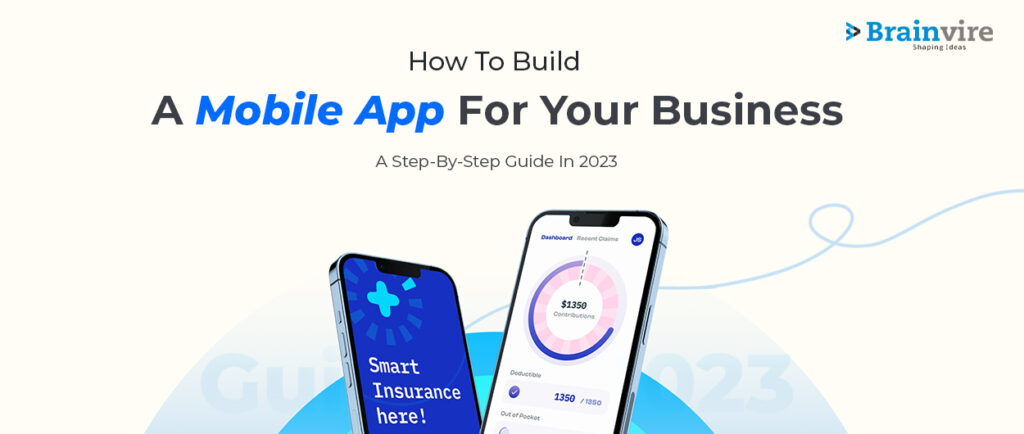
But how do you develop an application that stands out in 2023?
It’s simple. You can have your unique app quickly with a few tips and tricks. This blog analyses every stage of mobile application development for your business. Continue reading as we walk you through this comprehensive step-by-step mobile app development guide to develop a unique product that stands out.
Step-By-Step Process Of Developing A Mobile Application
Step 1: How to Come Up with a Winning Mobile App Idea?
To remain competitive in today’s digital economy, businesses must recognize the potential of mobile apps. So consider developing a mobile app to increase sales and expand your consumer base. But making a popular mobile app is a serious challenge. It calls for lots of preparation, study, and precision.
Identify the problem your mobile app will solve
To initiate the process of developing your mobile application, you must first figure out what problem you’re willing to solve. The most successful mobile apps solve an issue or alleviate major pain points experienced by their target audience.
To begin, consider the issues that ruin the experience of your intended audience. It could be anything from an inability to access certain information to a need for more effective means of communication.
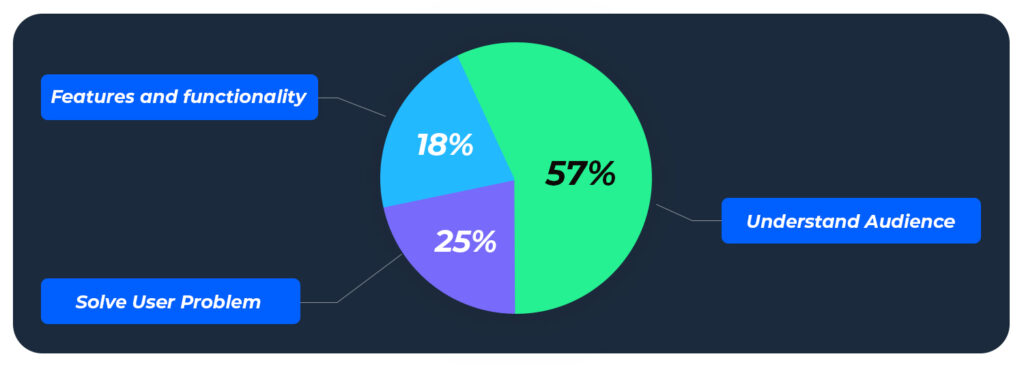
Once done, compile a list of potential issues, and select one or two that your app can effectively address. For instance, take the case of a restaurant owner interested in developing a mobile app for their establishment. Long lines of people waiting to be helped is an issue you’ve noticed.
In this case, your app’s ability to facilitate order placement in advance, with subsequent order pickup, could address this issue. Customers’ time and restaurant satisfaction would increase with this change.
However, consider consulting with mobile app development agencies if you need to be more effective in your research. These professionals can help you create an outstanding product with their knowledge and skills to assist you in developing a cutting-edge and user-friendly app, giving you a leg up in the competitive app industry.
Understand your target audience
Your target audience is the core focus of your business and software application. When designing an app, you need to consider who will use it. Exactly what are they looking for, and what do they like? To what extent do they suffer from those problems? If you know who you’re making your app, you can make it work for them in the ways they want.
To reach your intended audience, you must first create user personas. Here, you’ll want to imagine your usual users and give them traits that set them apart. Realreal people, your personas need a name, age, profession, and other details. If you take this step first, you’ll be better able to cater your app to your intended demographic.
If you expect your app to be used by busy professionals, it must be simple and intuitive. Ease-of-use elements, including the ability to place a fast and simple meal order, are also desirable.
Determine the app’s core features and functionality
Determine the app’s primary features and functionality after you’ve established the problem your app will answer and gain an understanding of your intended users. As part of this process, you’ll need to determine the specific capabilities and features your app will require to effectively address the issue you’ve discovered and satisfy your intended users.
To get started, list everything you can think of that might be useful in your app. Features like logging in, selecting from a menu, placing an order, and others may be part of this. Once you’ve compiled a list of features, sort them in order of user importance.
If your app aims to facilitate speedy order placement, features like a streamlined shopping cart and checkout process should be prioritized. Less crucial functionality, like order customization, could be implemented along the line.
Step 2: Choose Your Development Approach
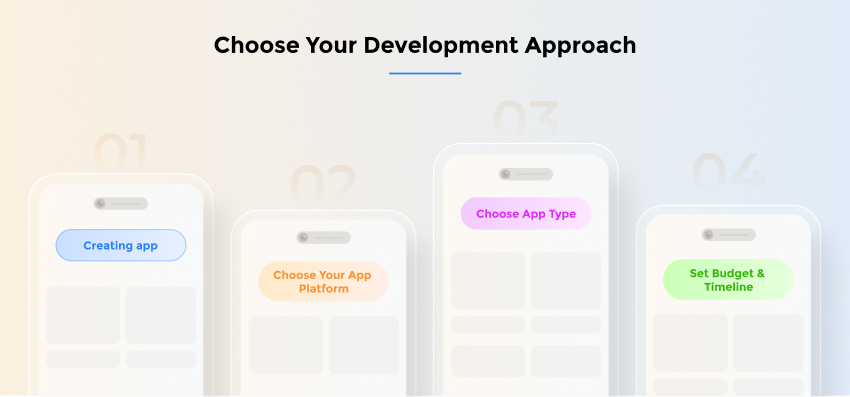
Building a mobile app from scratch
It involves careful planning and execution. Before you start, choose a development approach for your application before deciding its name, among other properties. You can only move ahead with a development strategy, budget, and other criteria once you have a clear understanding of your mobile app development approach.
When planning to select a development method, keep the following in mind:
Finalize Your App’s Platform (iOS, Android, or both)
Selecting a development platform for your application is the first step toward your development approach. The two most widely used operating systems for developing mobile applications are iOS and Android. However, before you settle with any of these options, you must do sound research as both OS have their own benefits and drawbacks.
Besides, if you want to lose the perks of neither of the platforms, you can settle for both platforms at the same time. This approach will take more effort and time, but it will guarantee that you attract the possible audience. If you go this path, you’ll need to settle on a development strategy that’s flexible enough to accommodate both platforms.
Choose Between Native Or Hybrid App Development
After settling on a platform, you must determine the best strategy for creating your app. You can build an app in one of three ways: natively, using a hybrid framework, or over the web.
Building a native app means tailoring it to work only on a single operating system. The efficiency and convenience of this method are unparalleled. Separate app development for iOS and Android takes more time and resources. Building a native app requires programmers to be fluent in the requisite platform languages, such as Swift for iOS and Kotlin for Android.
With the hybrid approach, you can create an app for both iOS and Android from a single set of source codes. In this method, the application is built using web technologies, including HTML, CSS, and JavaScript. Although creating a hybrid app can save time and money, it may not provide the same performance or user satisfaction as a fully native app.
Determine your budget and timeline for development
The fate of your app rests heavily on the budget and schedule for its creation. Before deciding on a strategy, you must know your development budget and timeframe.
Costing more and taking longer than developing a hybrid or online app, creating native software from scratch isn’t always the best option.
Consider developing a hybrid or web app if you need more time and money. However, remember that online and hybrid apps may not deliver the same performance or user experience as native apps.
The level of intricacy of your software is something else to think about. Although it’s more expensive and time-consuming, developing a native app may be the best solution if your app needs access to device-specific functions like GPS or camera.
Step 3: Wireframe & Design
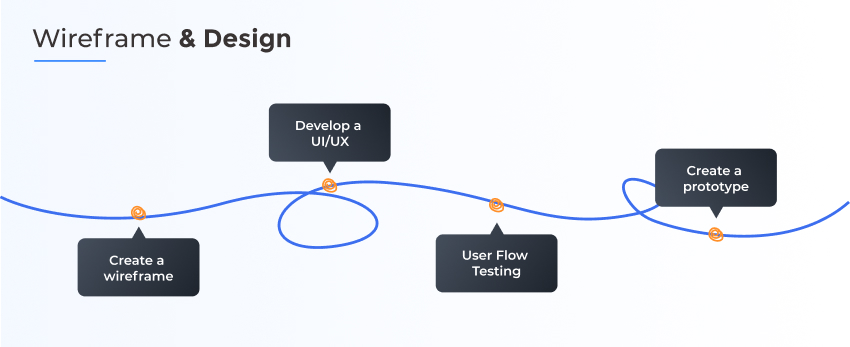
Creating a functional mobile application takes a lot of time and care. To get started, you first need to complete the crucial phases like:
- Chalking out a framework.
- Designing the UI & UX of the application.
- A prototype to determine the success of your app.
If you follow these recommendations, you’ll soon have access to an application that represents your company, meets the demands of your target market, and is fun to use.
Here’s an insight into each of the pointers to give you a more detailed understanding of the factors:
Create a wireframe to get an idea of your app’s layout and user flow
Creating a framework is your first step toward a visual depiction of your app’s structure, navigation, and possible user experience. This framework plays the role of a guide as you can use it to sketch out the overall approach of your program, map out the flow, and check the pace of your operations.
Besides, developing a framework also streamlines other interactive elements of your application. Once you have a framework, you can easily place important buttons, menus, and other interactive elements of your app.
Develop a UI/UX design that aligns with your brand identity and user needs
The success of your app depends heavily on the quality of the UI/UX design. The design of your app should be consistent with your brand’s aesthetic and speak to your intended demographic while still being intuitive and simple to use.
Ensure the design is similar across all devices and the interface is simple, with obvious links and buttons. It’s important to do user research and solicit feedback throughout the design process to produce a final product that meets the requirements of your target audience.
Create a prototype to test the app’s usability and functionality
Prototyping is a method for developing a functional model of your software before the final version is complete. It’s a great way to see how users interact with your app, find bugs, and gain useful user feedback.
Prototyping tools allow you to quickly and easily construct working prototypes of your app, complete with the ability to test the functionality of key features and simulate user interactions.
Step 4: Begin Mobile App Development

Congratulations on the hard work so far! However, in this phase, your app’s actual creation begins.
By this point, you would’ve laid the groundwork for your app’s front and back ends, coding in its fundamental features and functionality. If you’ve successfully reached this phase, it could also mean that you’ve possibly conducted extensive testing to find and correct any problems.
Here’s what follows during this phase of your development process:
Develop the app’s front-end and back-end
The front end of an app is the part that the user sees and uses. Everything a user sees, such as an interface, visuals, and animations, falls under this category. One definition of “back-end” is the “server-side” of an app. All processing, storing, and logic are taken care of by it.
The choice of front-end and back-end technologies for your mobile app development is crucial. While deciding on a technological stack, it’s essential to consider platform compatibility, performance, and development simplicity.
Implement core features and functionality
When the app’s front and back ends are finished, it’s time to build out the app’s key features and capabilities. Features like in-app purchases, push alerts, and data storage and retrieval are included. Your app’s success depends on key features, so you should prioritize and work on them immediately.
Conduct rigorous testing to identify and fix any bugs or issues
As with any software project, testing a product is an integral step to develop a winning mobile application. When your product passes through rigorous testing, you can rest assured that you’ve created an application that works properly across all devices, platforms, and operating systems it was designed for.
Step 5: Deployment & Maintenance

The development of a mobile app includes releasing and updating the app. Launching your app to the app store or web server, monitoring its performance and user feedback, and regularly upgrading and maintaining it to stay current and up-to-date with the latest trends and technologies are all part of this crucial stage.
Deploy the app to the app store or web server
Selecting a suitable hosting platform is the first step toward releasing your app. Depending on the type of app, this might be an iOS or Android app store or a web server. If you want your app to succeed on the selected platform, you’ll need to follow its rules and adhere to its standards.
Maintaining the app’s stability and functionality and meeting security and privacy standards fall under this category.
After finishing the necessary steps to get your app ready for release, you’ll need to submit it for review, which could take more than one round. Once your software has been reviewed and accepted, anybody can download and use it.
Monitor app performance and user feedback
After releasing your app to the public, you must watch how it is used and how people respond. To better understand how people use your app, you may utilize analytics tools to monitor user engagement, retention, and activity.
Another important aspect is the timely resolution of user complaints. As a result, you may boost the functionality and usability of your software, hence retaining users.
Continuously update and maintain the app to stay relevant and up-to-date with the latest trends and technologies
It’s vital to regularly update and maintain your app to keep it current and competitive in the market. In addition, maintaining functionality necessitates eliminating flaws, updating newer technology, and introducing new features.
A documented maintenance schedule includes routine updates, bug fixes, and security patches. This can aid you in maintaining bug-free software and giving your consumers the best possible experience.
Step 6: Marketing & Promotion

It must’ve been hard work so far! However, congratulations, you’re finally at the last phase of development.
App launches rely heavily on marketing and promotion to be successful. Without proper exposure, even the best app will have trouble attracting users and being successful.
The next step is to formulate a plan for spreading the word about your app to potential users, who can then be reached via paid and organic social media and internet advertising, and app analytics, which may be used to gauge the app’s success and pinpoint its weak spots.
Develop a marketing strategy to promote your app
An effective marketing plan should be in place before promoting your app. In this plan, specify who you’re going after, where you’ll advertise, and what you’ll say to get people interested in downloading your software.
Defining your ideal customer is essential to the success of your marketing campaign. If there is a specific audience in mind, who are they, and what problems do they have that your software will help them with? Targeting your messages and choosing the best channels to deliver them requires knowing your audience’s demographics, interests, and behaviors.
Picking the right methods to spread the word about your app is another essential part of your overall marketing plan. Social media, online ads, influencer marketing, email marketing, PR, and so on are some avenues out there.
Each distribution method has advantages and disadvantages; you must determine which works best for your software and intended users.
Finally, your app’s marketing approach should include messaging that effectively conveys the app’s value to prospective users. Your messages should be clear, interesting, and pertinent to your audience. To stand out from the crowd, your app’s pitch should emphasize what makes it special and how it’s better than the alternatives.
Promoting and publicizing your app using social media and online advertising is a way to get your message in front of your intended users.
Websites like Facebook, Instagram, and Twitter are great for promoting business and attracting new users to download an app. Making an app-specific social media account is a great way to spread the word and interact with users of your app. In addition, app installs can be boosted through social media adverts tailored to various user profiles.
Another excellent way to persuade people to download your software is via online advertisement. Thanks to the possibilities of Facebook and Google Ads, today business owners have the option to target a specific user base to promote and launch their products. This way, businesses already develop a following for their application before its initial launch.
But while you’re at it, don’t forget to keep an eye on the procedure. Successful marketing is a mix of various elements including SEO and social media optimization. Therefore, ensure that you understand content planning and leverage analytical tools to keep a track of the performance.
Use app analytics to measure the app’s performance and identify areas for improvement
No matter how successful you think your product is, you can’t guarantee its success without proper app analytics in place. Analytics for mobile apps may tell you things like how often users open the app, how long they stay in it, and where they leave.
With the help of app analytics, you can monitor your app’s performance and make informed decisions to enhance it. For example, if a user abandons your application at a given time, you’ll have the tools to figure out why and later adjust those factors to enhance your app development.
Best Practices For Mobile App Deployment
While developing and launching a mobile application is hard, it’s just 50% of the job done. After successfully launching your application, it’s time to scale your venture and continue adding customers to your user base.

Here are a few takeaway tips to ensure you enjoy a successful mobile app deployment:
Monitor The Performance:
First, you need to monitor the performance of your application precisely. For example, pay attention to the different loading methods if the application faces delays and responsiveness difficulties.
This way, you’ll have a better chance to stay prepared with your analytics report. Evaluate your churn and retention statistics and try to break down usage trends to leverage your marketing.
Keep Your Interface Updated:
Staying updated with your UI is another method to scale your app deployment. Consumers tend to align themselves with evolving trends, styles, and other key app features that require regular updates.
If you maintain a similar app interface over time, you can risk losing your users to alternative rival applications. Therefore, cover the pain points and introduce a more simplified UI regularly.
Stay Updated With The Latest Software:
Living in a digital world, you can’t miss out on the significance of operating systems. Both iOS and Android are known to update their operating systems regularly. It would help if you kept up with these updates to stay at the top of your game.
Therefore, ensure that you develop an application with scope for upgrades to match its operations with different OS. Additionally, it helps if you continue to create a similar experience across different platforms.
Fixing Bugs Can Aid Customer Retention:
Software programs are only ever released after thorough testing. Yet, bugs are a necessary component in creating mobile applications. Furthermore, repairing bugs may demonstrate your commitment and trust in your consumers and mobile devices.
It could also help you gain more customers and develop goodwill over time. What’s more? You could also incorporate new features and ask about modifications directly from your customers via surveys and feedback.
In A Nutshell
It might be difficult to create a mobile app that meets the demands of both your company and your customers, but by following the steps outlined above, you can avoid typical problems. In addition, careful planning at every level, from conception to advertising, is required for an efficient app launch and ongoing maintenance.
Once you have these factors in place, you can rest assured that your mobile app is still helpful to consumers in 2023 and beyond.
FAQs
here are several ways in which a business can profit from using a mobile app. Some of the most common perks of having a mobile app are:
– Improved interaction with customers
– Increased sales
– Improved brand recognition.
The time period required to develop effective software is unknown! No application is perfect. It can take a few months to a year to create a mobile app, depending on factors including the app’s complexity, the chosen platform, and the developer’s experience.
Several factors, including the complexity, platform, and functionality of the app, contribute to the overall cost of creating a mobile app, which can be anywhere from a few thousand to hundreds of thousands of dollars.
The difference between a native app and a hybrid app is that the latter can function on more than one system. Web applications may be accessed and used entirely within a web browser.
Standard characteristics for mobile apps should include a clean interface, quick loading, push notifications, and the capacity to operate without an internet connection.
Not entirely! Thanks to the presence of several low-code and no-code app creation tools, you don’t have to know how to code to make a mobile app. However, since these apps limit your operations, it’s wise to hire professionals with prior coding experience.
Choose the best mobile app development agencies for your company by comparing their experience, portfolio, cost, and communication ability.
Updates to mobile apps are necessary for fixing bugs, optimizing performance, and introducing new features. The intricacy of the software and input from users will determine how often updates are released.
Related Articles
-
5 Tips To Optimize The Android App Development
Android- one of the popular operating systems is dominating the global app market with billions of apps. And, android app development is a breeze, that generally every one in two
-
The Three Popular B2B App Marketing Strategies for Every App Development Firm
Talking About The Three Popular B2B App Marketing Strategies for Every App Development Firm, B2B marketing or “Business-to-Business Marketing” as the name suggests is the popular phenomenon of marketing adopted
-
What is the Estimated Cost to Develop a Doctor’s Appointment App?
The blend of technology and healthcare has transformed the entire healthcare economy tremendously. There is a dire need for a healthcare app development company that can design useful healthcare apps.

